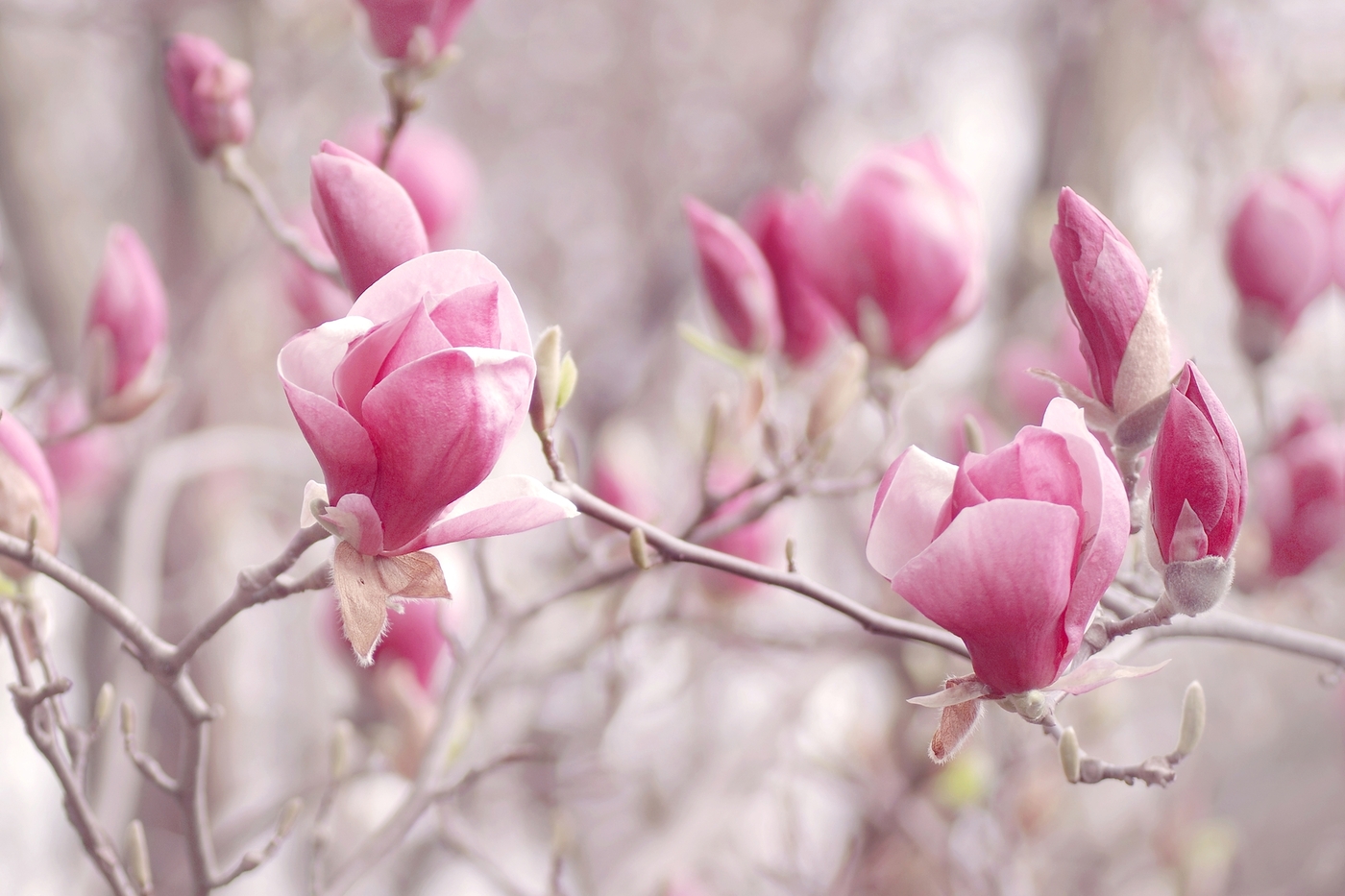If you’re curious about common (and plenty of uncommon) types of flowers that start with the letter M, you’ve come to the right place. Our list includes well-known flowers like marigolds and milkweed as well as unique flowers like merrybells and meadowsweet.
From succulents to shrubs, and groundcovers to flowers that tower at ten feet tall, this list has a wide variety and types of flowers that start with M.
List of Flowers That Start With M
- Macleaya cordata (Plume poppy)
- Magnolia virginiana (Sweetbay magnolia)
- Mammillaria dixanthocentron (Mammillaria)
- Marigold (Calendula officinalis)
- Marsh marigold (Caltha palustris)
- Masterwort (Astrantia major)
- Mayapple (Podophyllum peltatum)
- Maximilian sunflower (Helianthus maximiliani)
- Meadowsweet (FIlipendula spp.)
- Meadow rue (Thalictrum rochebruneanum)
- Mediterranean sea holly (Eryngium bourgatti)
- Merrybells (Uvularia grandiflora)
- Mexican hat (Ratibida spp.)
- Mexican sunflower (Tithonia rotundifolia)
- Milkweed (Asclepias spp.)
- Miss Willmott’s ghost (Eryngium giganteum)
- Mitchella repens (Partridgeberry)
- Mock orange (Philadelphus spp.)
- Monarda didyma (Beebalm)
- Monarda fistulosa (Wild bergamot)
- Monkshood (Aconitum spp.)
- Montauk daisy (Nipponanthemum nipponicum)
- Moss rose (Portulaca grandiflora)
- Mountain laurel (Kalmia latifolia)
- Mullein (Verbascum thapsus)
- Mum (Chrysanthemum spp.)
1. Macleaya cordata (Plume poppy)
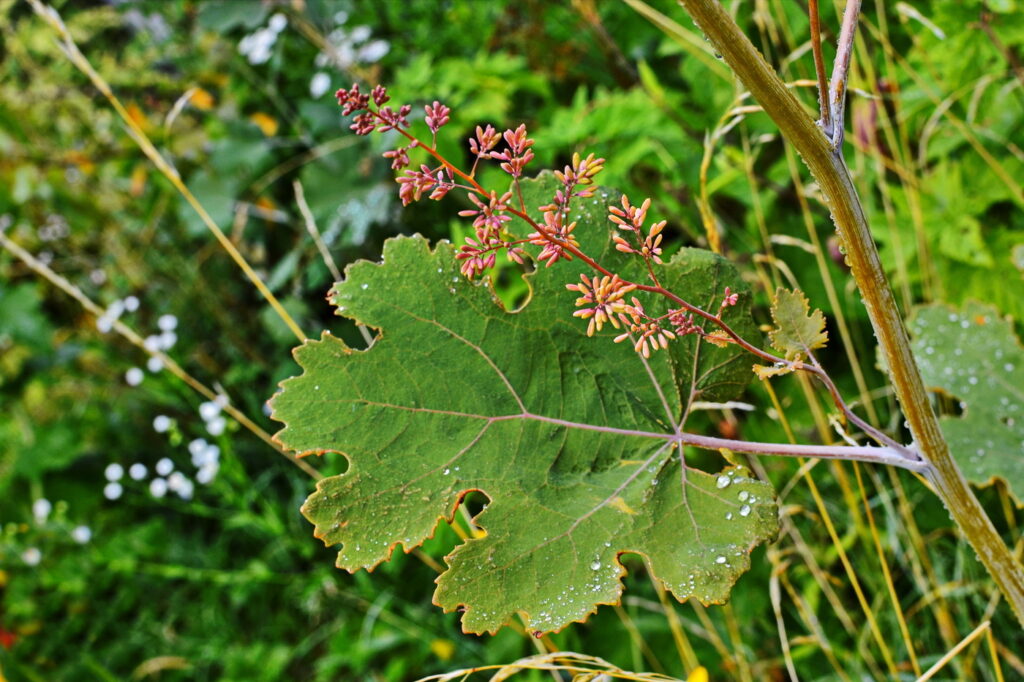
This plant has unique, striking foliage. It spreads by rhizome or by seed and some gardeners consider it invasive. The plume poppy is best suited for backgrounds and borders due to its height. It is one of the tallest poppies and flowers starting with M as it can grow up to seven feet tall.
- Type: Herbaceous perennial
- Water: Average
- Bloom Color: Cream
- Hardiness Zone(s): 3 to 5
- Bloom Time: Summer
- Mature Height (feet): 5 to 7
- Exposure: Full sun to part shade
- Uses: Backgrounds, mixed borders
2. Magnolia virginiana (Sweetbay magnolia)
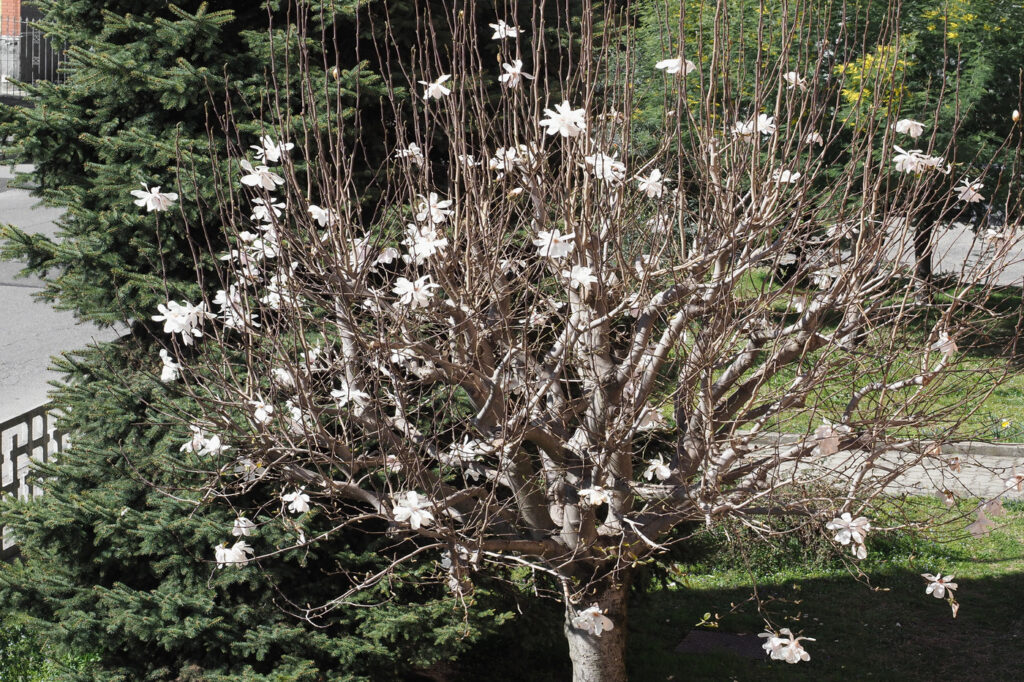
Native to the eastern US, magnolias have stunning and fragrant blooms. Its soft, white flowers have a lemony scent. It can be grown as a tree or shrub depending on how it’s pruned. The sweetbay magnolia has dark green, waxy foliage and does best in moist soils.
- Type: Tree
- Water: Keep moist
- Bloom Color: White
- Hardiness Zone(s): 5 to 10
- Bloom Time: Spring
- Mature Height (feet): 10 to 35
- Exposure: Full sun to part shade
- Uses: In clay soils, rain gardens
3. Mammillaria dixanthocentron (Mammillaria)
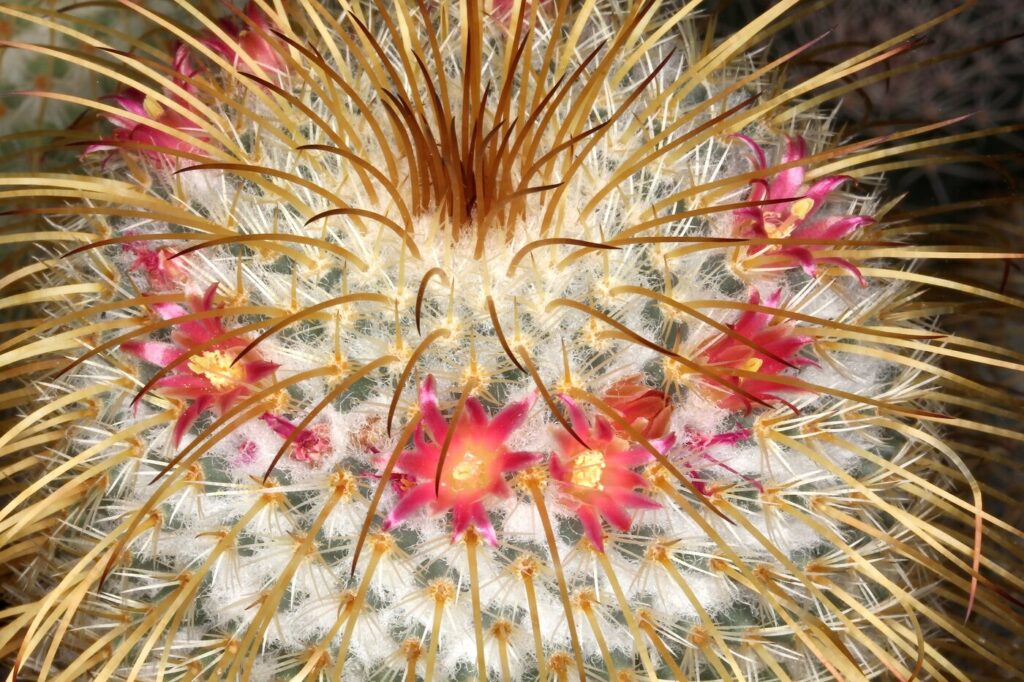
While the mammillaria is a desert plant, it should be shielded from the direct summer sun in warm climates. In cooler climates, it is an excellent container plant. It has a round growth shape. When it blooms, it forms a ring of flowers at the top of the plant.
- Type: Succulent cactus
- Water: Dry to Average
- Bloom Color: Crown of purple flowers
- Hardiness Zone(s): 9 to 11
- Bloom Time: Summer
- Mature Height (feet): 2 to 6
- Exposure: Full sun
- Uses: Containers, desert gardens
4. Marigold (Calendula officinalis)
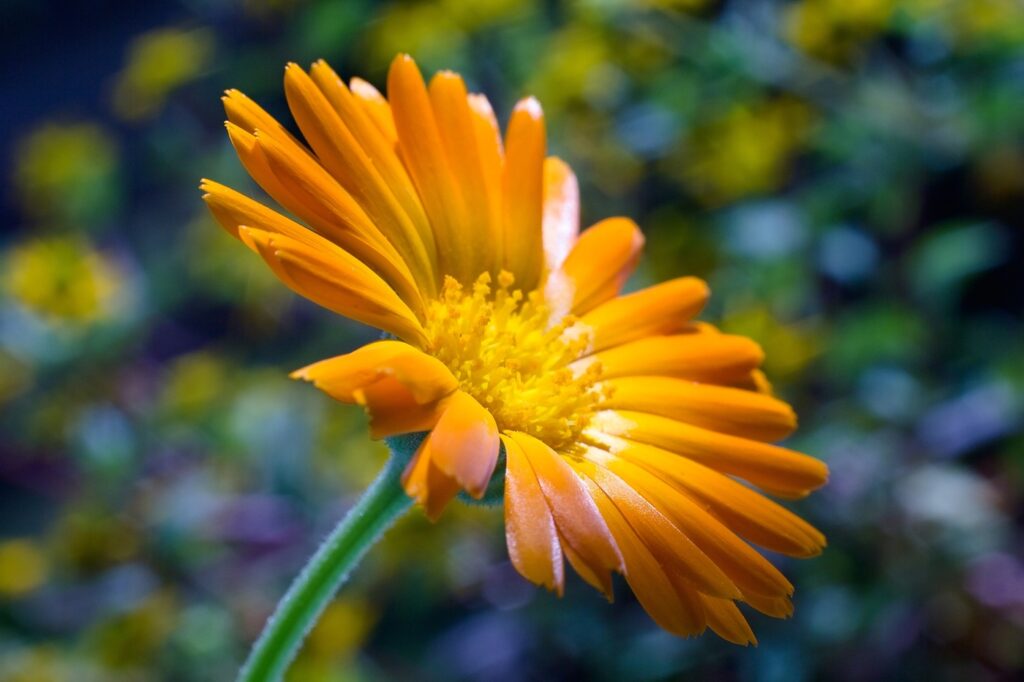
The iconic marigold has many blooms and is loved by pollinators. Because it is easy to grow, it is an ideal plant for children to practice their gardening skills. Marigolds are often vibrant in color and bloom for a long period. If grown properly, marigolds can bloom from late spring all the way through to fall.
- Type: Annual
- Water: Average to moist
- Bloom Color: Yellow, orange
- Hardiness Zone(s): 2 to 11
- Bloom Time: Summer
- Mature Height (inches): 12 to 24
- Exposure: Full sun to part shade
- Uses: Containers, hanging baskets, borders, children’s gardens
5. Marsh marigold (Caltha palustris)
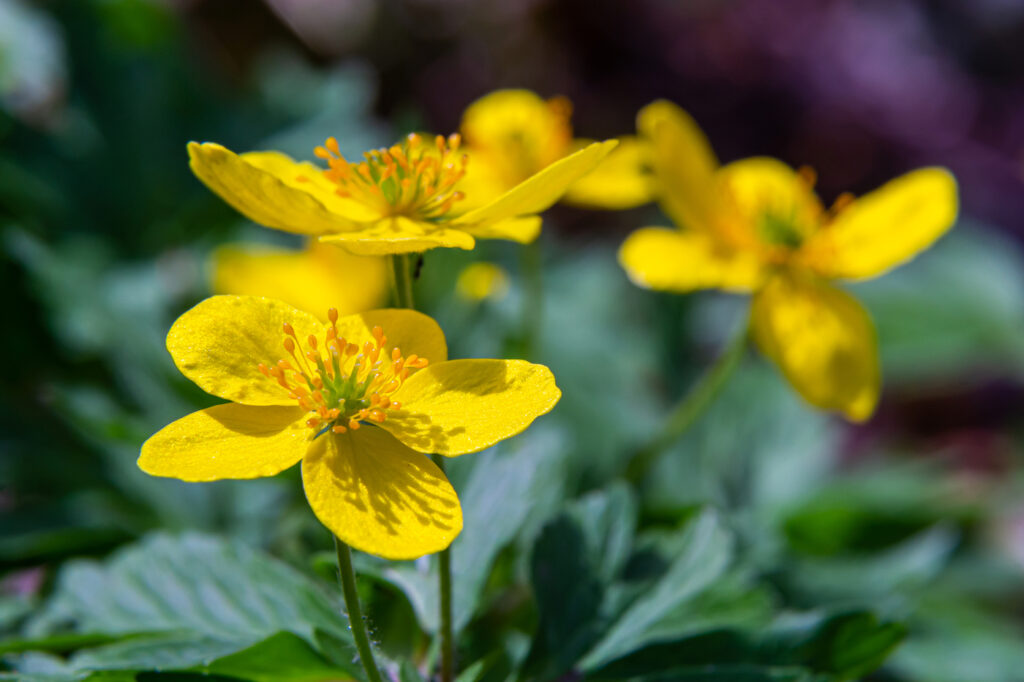
The marsh marigold is one of the flowers starting with an M that does best in boggy, moist soil. It needs shade in summer, or else it will go dormant. While their name suggests they are part of the marigold family, they are not. Marsh marigolds are part of the buttercup family and are native to woodlands.
- Type: Herbaceous perennial
- Water: Wet, very moist
- Bloom Color: Bright yellow
- Hardiness Zone(s): 3 to 7
- Bloom Time: Late spring to early summer
- Mature Height (inches): 12 to 18
- Exposure: Full sun to part shade
- Uses: Rain garden, near water, and in damp gardens
6. Masterwort (Astrantia major)
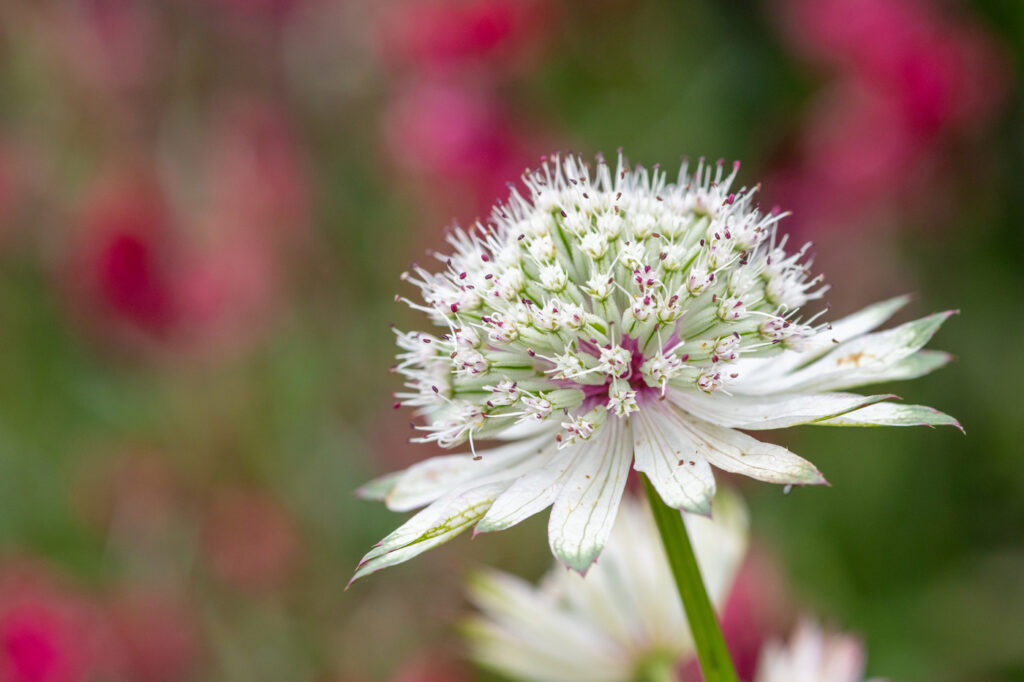
Native to Europe and western Asia, the masterwort grows best in cooler climates. It is also referred to as the pincushion plant for its unique flower shape. It makes a good cut and can be used in dried flower arrangements.
- Type: Herbaceous perennial
- Water: Keep soil moist
- Bloom Color: Pink, white, and red
- Hardiness Zone(s): 4 to 7
- Bloom Time: Summer
- Mature Height (inches): 20-36
- Exposure: Part shade/shade
- Uses: Borders and shady parts of the garden
7. Mayapple (Podophyllum peltatum)
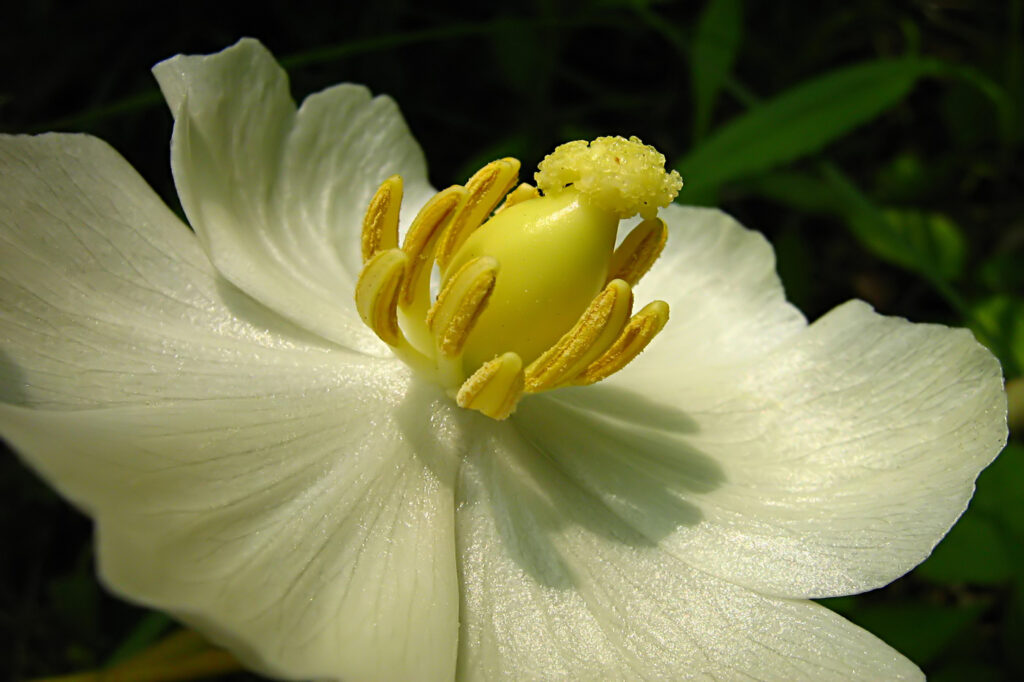
Mayapple can be planted near black walnuts and tolerates drought. Its fruit can be eaten but all other parts of the plant are poisonous. Mayapple can be found in woodlands in the eastern US. Recently, scientific researchers have been studying and using it for certain cancer treatments.
- Type: Herbaceous perennial
- Water: Keep slightly moist
- Bloom Color: White with light yellow centers
- Hardiness Zone(s): 3 to 8
- Bloom Time: May
- Mature Height (inches): 12 to 18
- Exposure: Part shade to full shade
- Uses: Shade gardens and woodlands
8. Maximilian sunflower (Helianthus maximiliani)
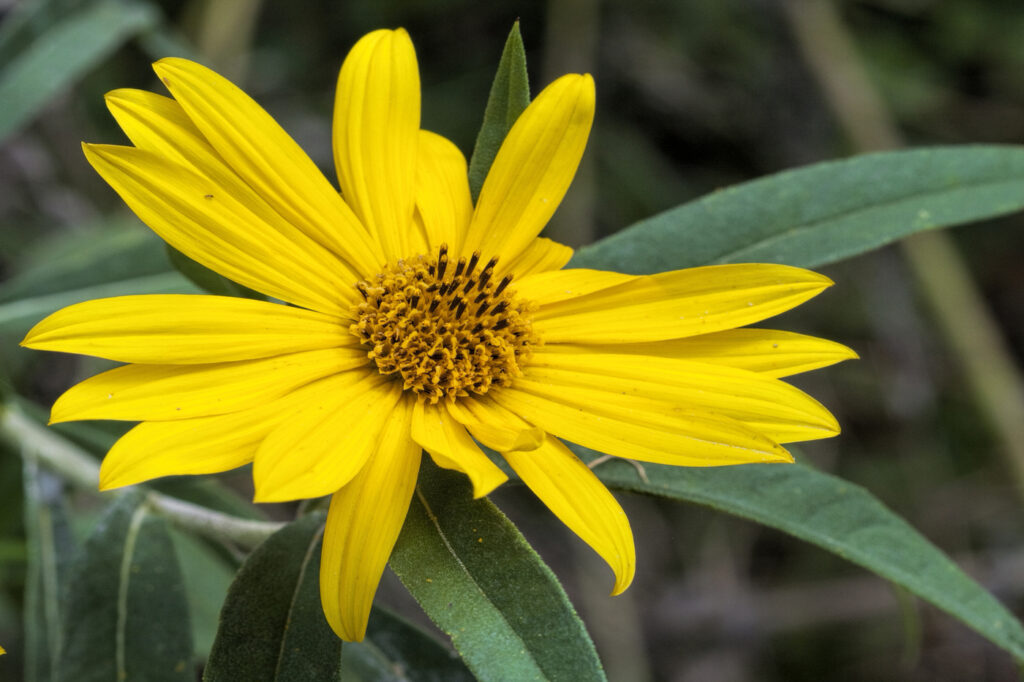
The maximilian sunflower is pollinator-friendly and its seeds are eaten by birds. Sunflowers are easy to grow so they are ideal for children’s gardens. Like most sunflowers, the maximilian sunflower can grow to high heights. It is recommended that gardeners plant this where it won’t shade out other plants.
- Type: Herbaceous perennial
- Water: Dry to medium
- Bloom Color: Yellow petals with a dark center
- Hardiness Zone(s): 4 to 9
- Bloom Time: Late summer
- Mature Height (feet): 3 to 10
- Exposure: Full sun
- Uses: Meadows, backgrounds, children’s gardens
9. Meadowsweet (Filipendula spp.)
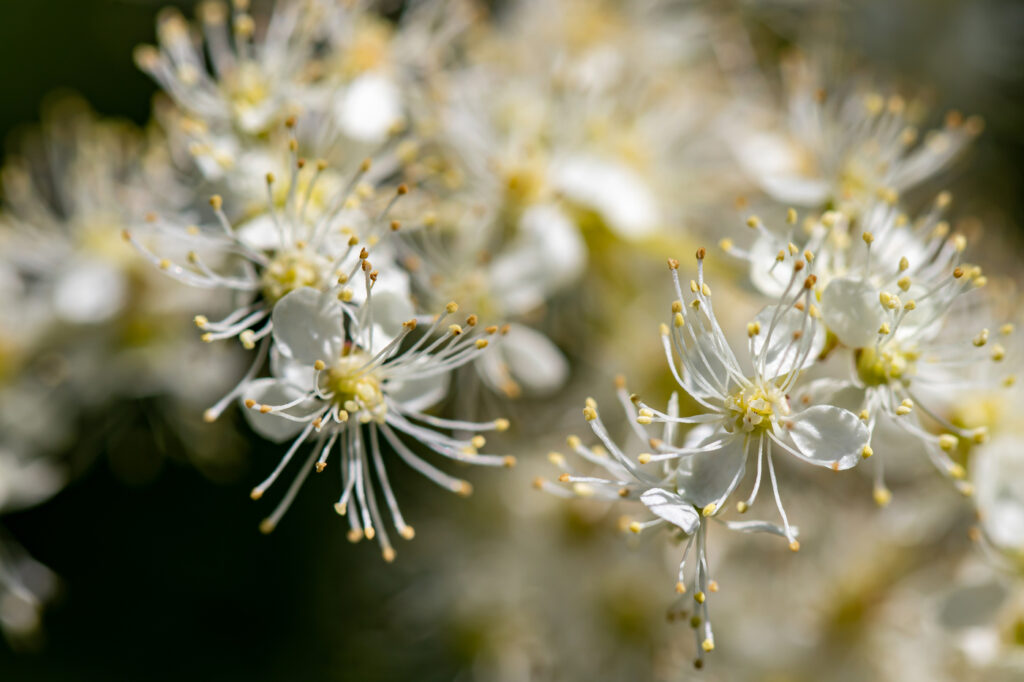
Meadowsweet has bold, fragrant blooms. It grows well in moist gardens and is native to Japan. It is best grown in groups or clumps to give a fuller appearance. Meadowsweet has been used for both ornamental and herbal purposes.
- Type: Herbaceous perennial
- Water: Keep soil moist, wet
- Bloom Color: Pink, white
- Hardiness Zone(s): 3 to 8
- Bloom Time: Spring to summer
- Mature Height (feet): 3 to 8
- Exposure: Full sun and part shade
- Uses: Backgrounds, borders, rain gardens, and meadows
10. Meadow rue (Thalictrum rochebruneanum)
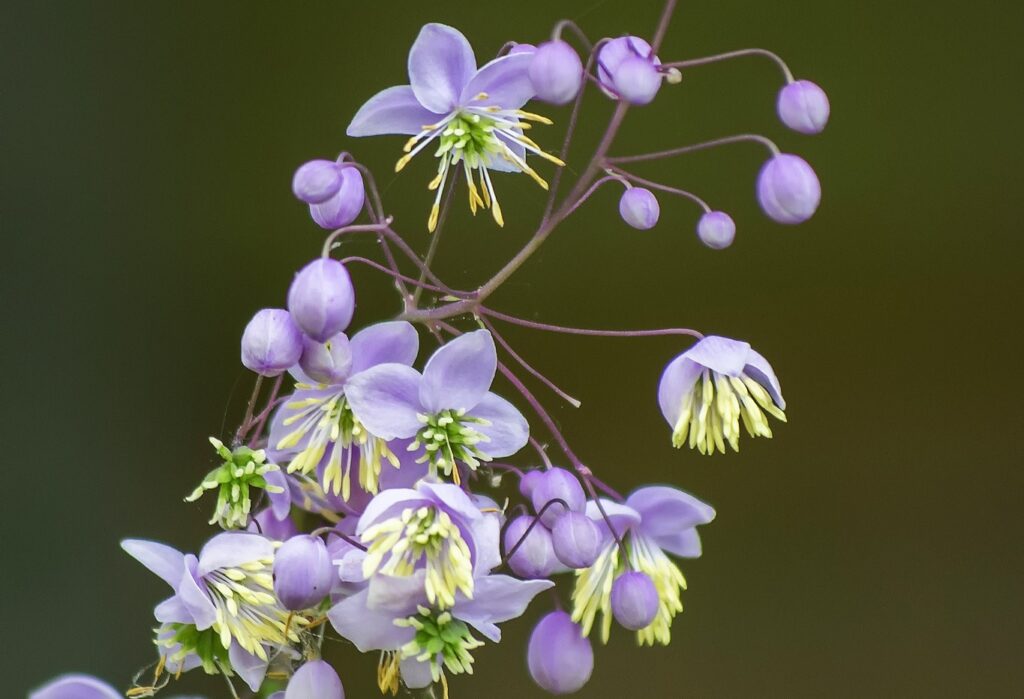
Meadow rue makes for a good cut flower. Additionally, it is deer and rabbit resistant. True to its name, the meadow rue grows best in meadows. It is a common flower in midwestern states and thrives in full sun.
- Type: Herbaceous perennial
- Water: Keep it moist in well-draining soil
- Bloom Color: Purple, lavender
- Hardiness Zone(s): 4 to 7
- Bloom Time: Spring
- Mature Height (feet): 4 to 6
- Exposure: Full sun to part shade
- Uses: Borders and shaded meadows
11. Mediterranean sea holly (Eryngium bourgatti)

Mediterranean sea holly thrives in sandy spots and is drought tolerant. It is a favorite among florists and flower arrangers for its unique appearance. The plant itself has a spiny stem and leaves, so it should be handled with caution.
- Type: Herbaceous perennial
- Water: Dry
- Bloom Color: SIlvery blue
- Hardiness Zone(s): 5 to 8
- Bloom Time: Summer
- Mature Height (inches): 12 to 24
- Exposure: Full sun
- Uses: Borders, rock gardens, sandy gardens
12. Merrybells (Uvularia grandiflora)
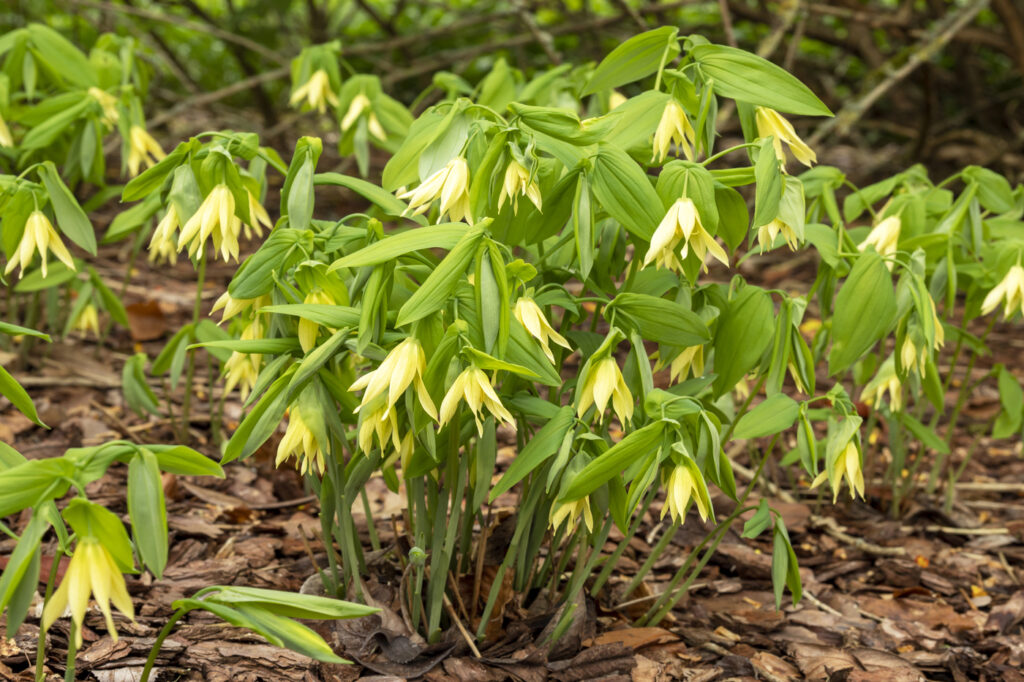
Native to North America, merrybells can tolerate drought and dry soil conditions. Their tiny yellow flowers are ideal for alpine gardens. Merrybells should not be exposed to the full, unfiltered sun. They grow best in shaded spots in the garden or in woodland gardens.
- Type: Herbaceous perennial
- Water: Keep moist in well-drained soil
- Bloom Color: Yellow
- Hardiness Zone(s): 4 to 9
- Bloom Time: Spring
- Mature Height (inches): 16 to 24
- Exposure: Part shade
- Uses: Woodlands/forests and shady parts of the garden
13. Mexican hat (Ratibida spp.)
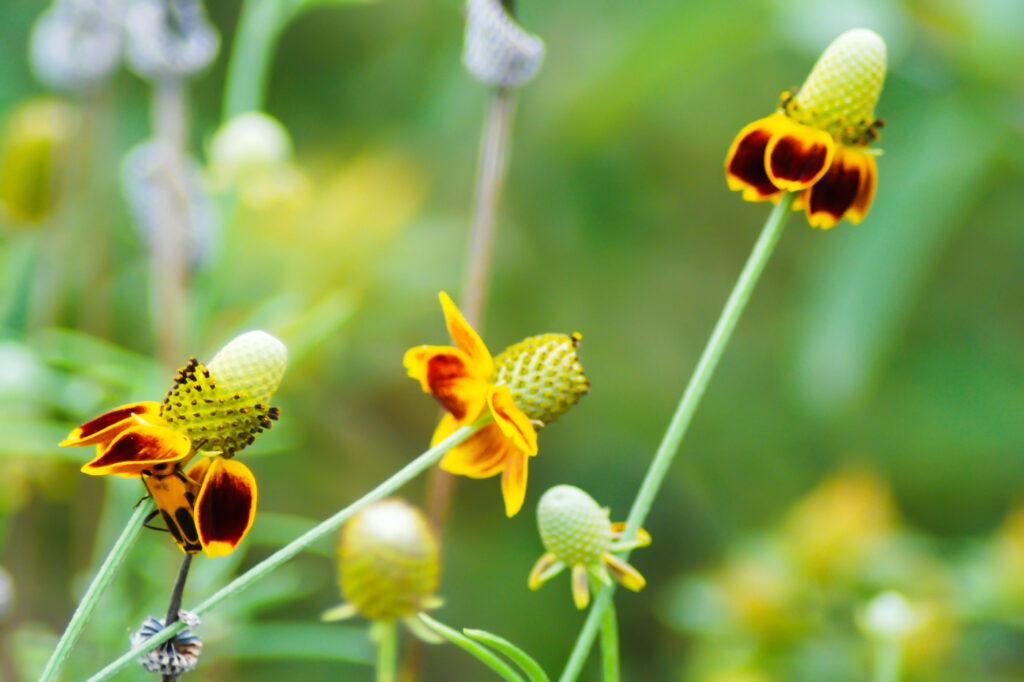
The Mexican hat has a unique bloom shape – like a Mexican hat or sombrero. Because it has long-lasting blooms, it makes for an excellent cut flower. It attracts beneficial insects and is pollinator-friendly. Additionally, the Mexican hat can tolerate drought.
- Type: Herbaceous perennial
- Water: Average in well-draining soil
- Bloom Color: Yellow, red
- Hardiness Zone(s): 4 to 9
- Bloom Time: Late summer
- Mature Height (inches): 36 to 60
- Exposure: Full sun
- Uses: Borders and meadows
14. Mexican sunflower (Tithonia rotundifolia)
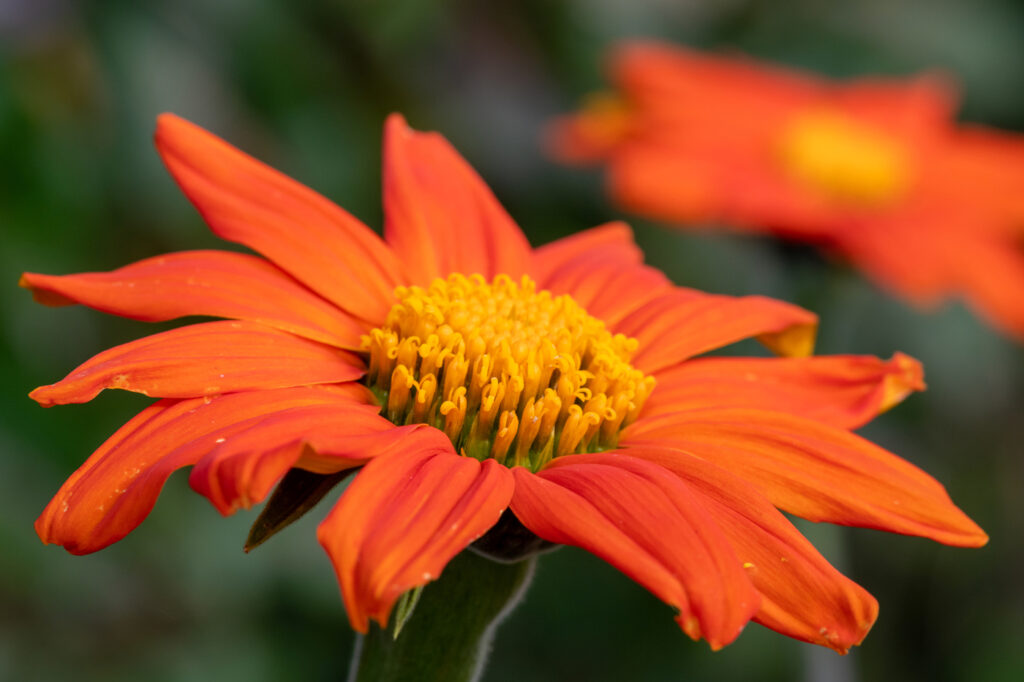
Mexican sunflower is native to Mexico and Central America. It attracts beneficial insects and is easy to grow. While it doesn’t grow as tall as the maximilian sunflower, it can still reach heights of six feet, making it one of the taller flowers that start with M.
- Type: Annual
- Water: Dry to medium
- Bloom Color: Orange
- Hardiness Zone(s): 2 to 11
- Bloom Time: Late summer
- Mature Height (feet): 4 to 6
- Exposure: Full sun
- Uses: Borders, backgrounds, children’s gardens
15. Milkweed (Asclepias spp.)
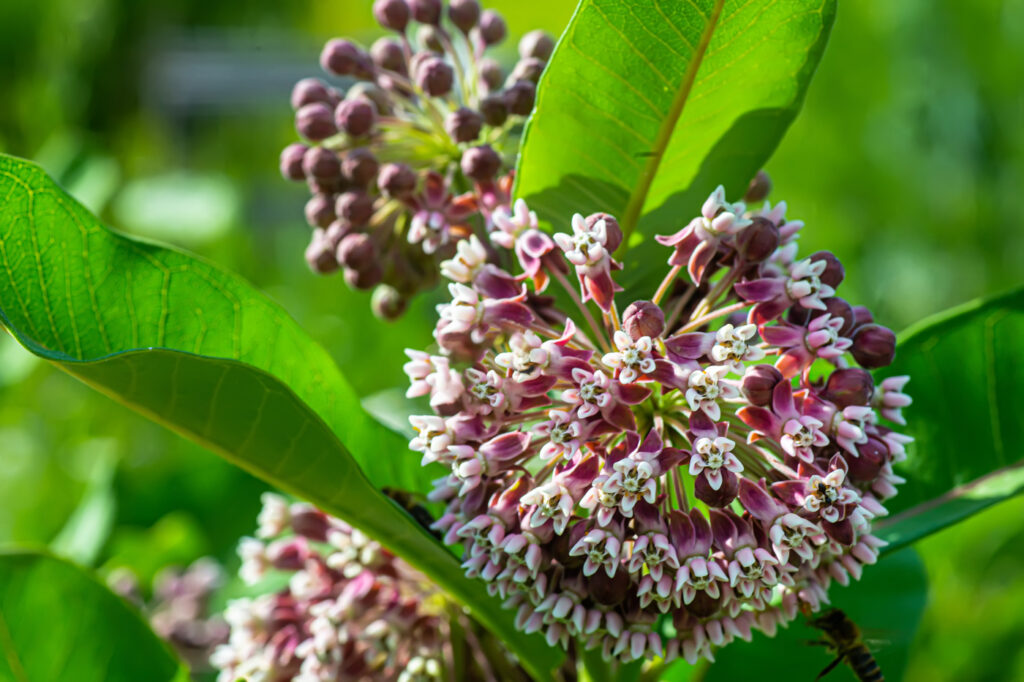
Milkweed is an essential habitat plant for Monarch butterflies. Monarch butterflies will lay their eggs on the milkweed. Then the larvae will develop and hatch. The young caterpillars then use the milkweed as a food source. Its flowers that start with M are vital to gardens; they are pollinator-friendly, drought-tolerant, and vigorous growers.
- Type: Herbaceous perennial
- Water: Average, let the soil dry between waterings
- Bloom Color: Pink, orange, yellow
- Hardiness Zone(s): 3 to 9
- Bloom Time: Summer
- Mature Height (feet): 2 to 3
- Exposure: Full sun
- Uses: Borders, rocky areas, woodland edges
16. Miss Willmott’s ghost (Eryngium giganteum)
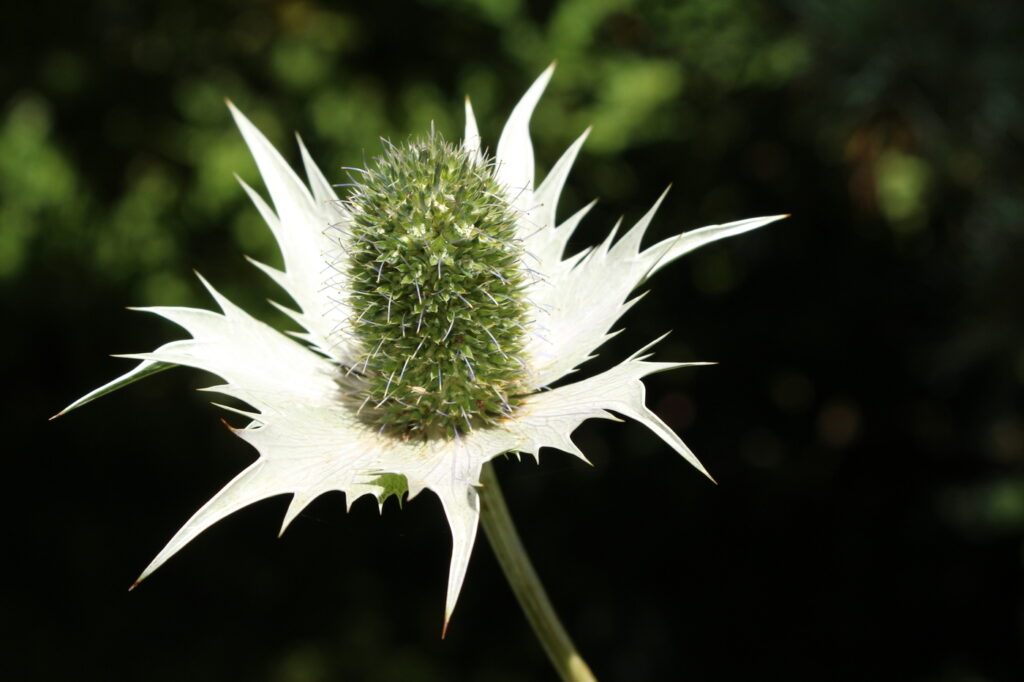
This variety of sea holly was named after the landscape designer, Ellen Willmott. When Miss Willmott would visit the gardens of friends and family, she would drop Eryngium seeds. Its foliage has a ghostly white appearance and the plant has thistle-like blooms.
- Type: Herbaceous perennial
- Water: Medium
- Bloom Color: Silvery blue
- Hardiness Zone(s): 4 to 7
- Bloom Time: Summer
- Mature Height (feet): 2 to 4
- Exposure: Full sun
- Uses: Borders, rock gardens, sandy areas
17. Mitchella repens (Partridgeberry)
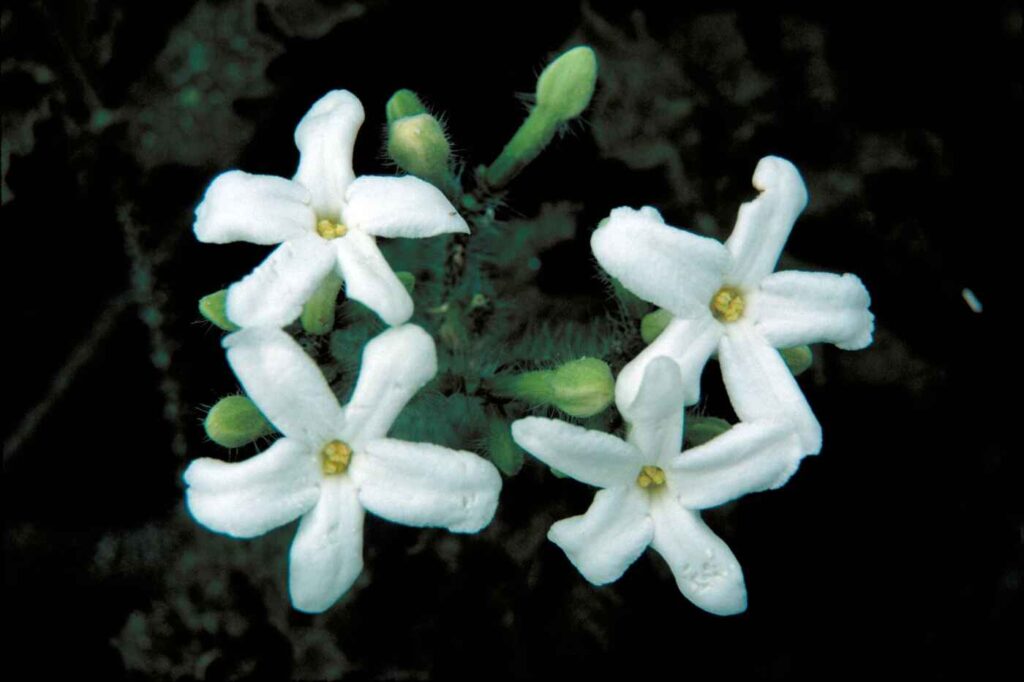
This plant has fragrant, simple flowers. It has fragrant blooms that seed and form edible berries. Being a low grower, it makes an excellent groundcover. This flower can be planted anywhere, provided there is enough shade.
- Type: Broadleaf evergereen
- Water: Average to medium
- Bloom Color: White
- Hardiness Zone(s): 3 to 8
- Bloom Time: Summer
- Mature Height (inches): Up to 3
- Exposure: Part shade to full shade
- Uses: Groundcover, shady parts of the garden
18. Mock orange (Philadelphus spp.)
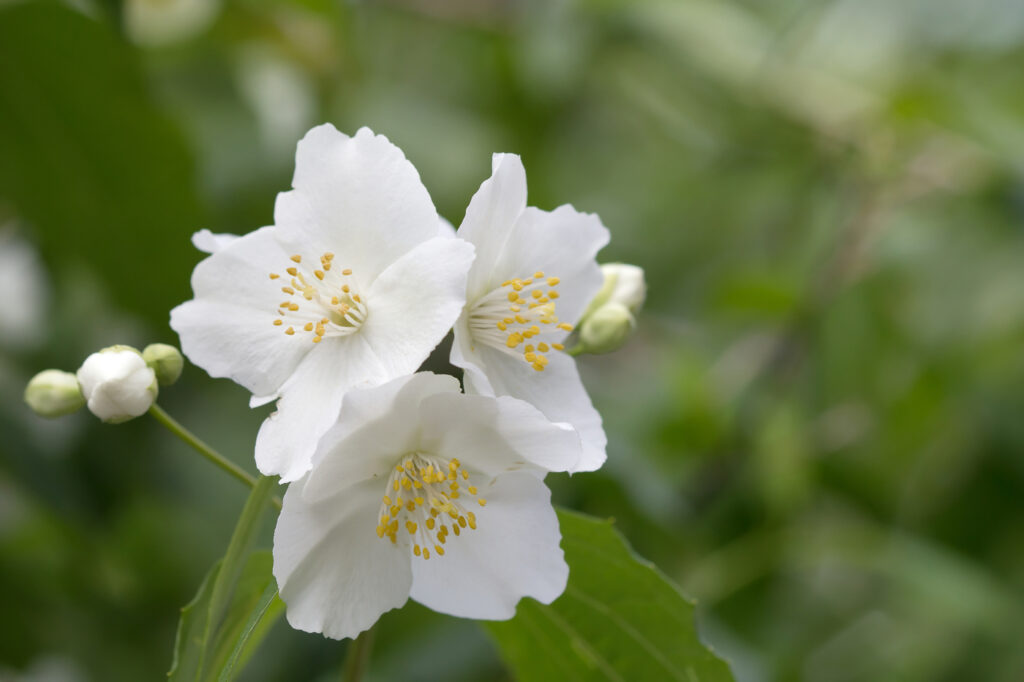
Mock orange gets its name from its resemblance to the blooms of an orange. During blooming, it has many white, fragrant blooms. There is no shortage of options with mock oranges as there are over 40 species. These widespread flowers that start with an M are native to three continents: Europe, Asia, and North America.
- Type: Deciduous shrub
- Water: Average
- Bloom Color: White
- Hardiness Zone(s): 4 or 5 to 8 or 9 (depending on species)
- Bloom Time: Late spring
- Mature Height (inches):
- Exposure: Full sun to part shade
- Uses: Hedges, backgrounds, woodland edges
19. Monarda didyma (Beebalm)
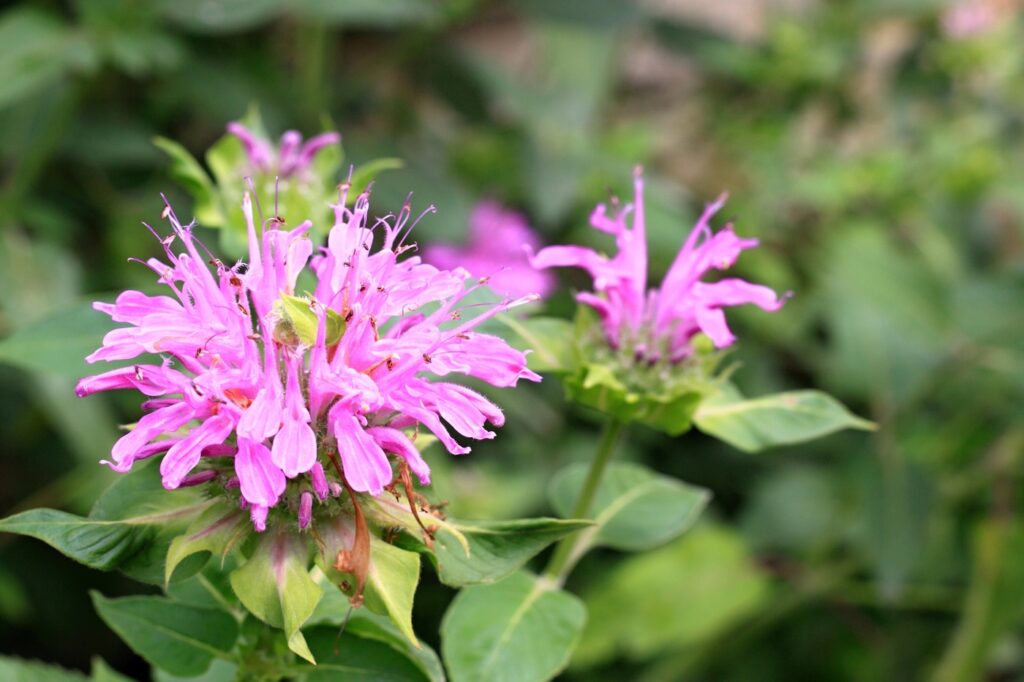
Beebalm is easy to grow and suitable for many garden types. As its name indicates, it is bee (and pollinator) friendly. It is native to North America and comes in a wide range of colors.
- Type: Herbaceous perennial
- Water: Keep soil moist
- Bloom Color: Red, pink, purple, white
- Hardiness Zone(s): 5 to 8
- Bloom Time: Summer
- Mature Height (inches): 24 to 48
- Exposure: Sun/part shade
- Uses: Borders and meadows
20. Monarda fistulosa (Wild bergamot)
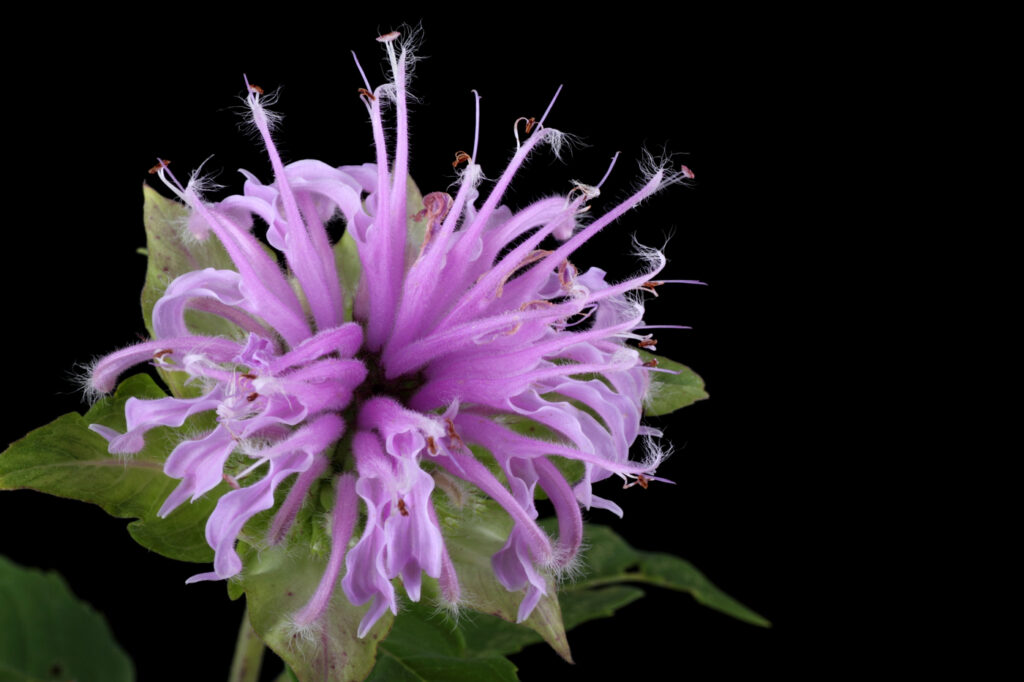
This plant is both pollinator-friendly and fragrant. It is native to North America and grows in meadows and woodland edges. It is native to North America and has unique blooms that are very similar to bee balm.
- Type: Herbaceous perennial
- Water: Dry to medium
- Bloom Color: Lavender
- Hardiness Zone(s): 3 to 9
- Bloom Time: Summer
- Mature Height (feet): 2 to 4
- Exposure: Full sun to part shade
- Uses: Herb, rain garden
21. Monkshood (Aconitum spp.)
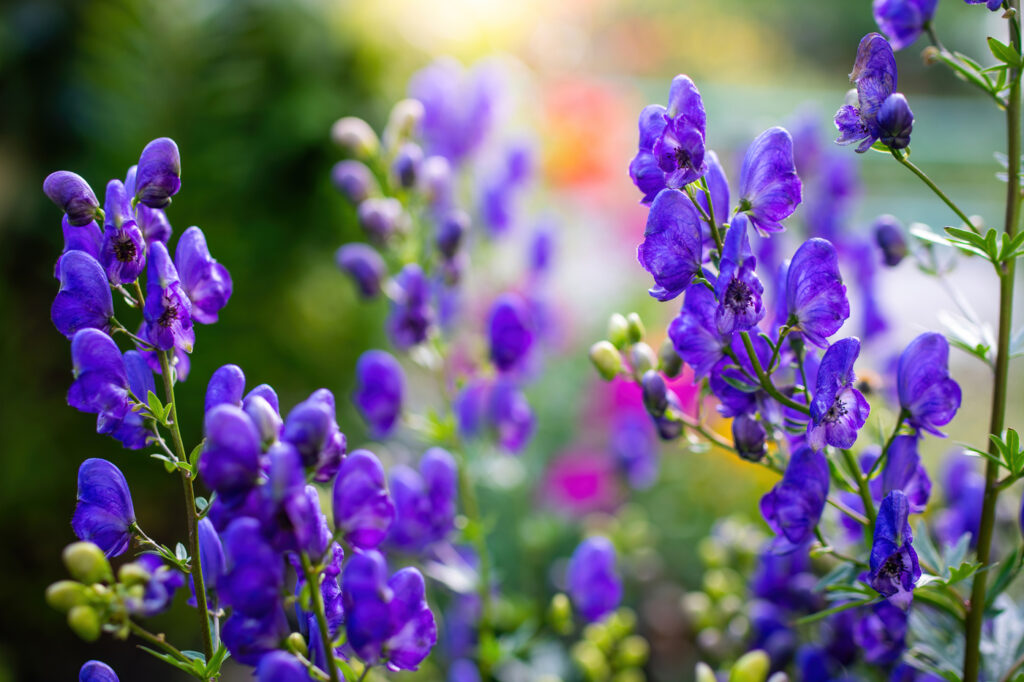
Monkshood is an uncommon flower most often grown for its pretty purple flowers. While it appears delicate, it is extremely poisonous. If ingested, monkshood can be deadly to humans. Because of its toxicity, it is deer and rabbit resistant.
- Type: Herbaceous perennial
- Water: Keep soil moist
- Bloom Color: Blue/violet
- Hardiness Zone(s): 3 to 7
- Bloom Time: Late summer
- Mature Height (inches): 30 to 48
- Exposure: Part sun/shade
- Uses: Backgrounds and borders
22. Montauk daisy (Nipponanthemum nipponicum)
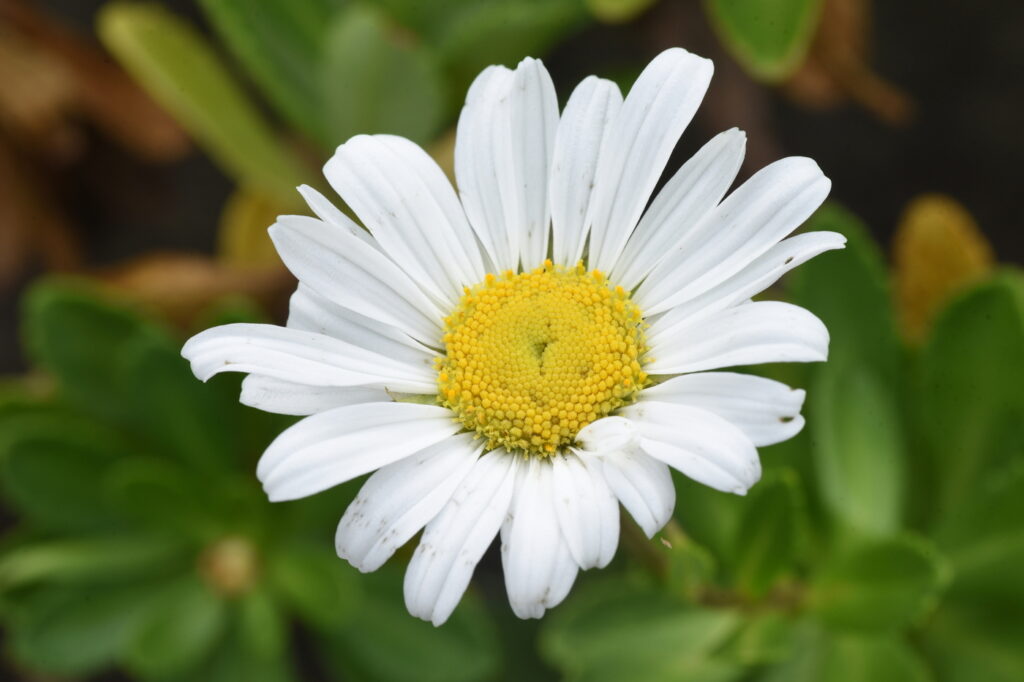
The Montauk daisy is a very popular flowers starting with M among florists and is a staple for cut flower gardens. It is easy to grow and is pollinator-friendly. It makes a good cut flower and is often used in dry flower arranging as well.
- Type: Herbaceous perennial
- Water: Average in well-draining soil
- Bloom Color: White
- Hardiness Zone(s): 5 to 9
- Bloom Time: Fall to late fall
- Mature Height (inches): 9 to 36
- Exposure: Full sun
- Uses: Borders
23. Moss rose (Portulaca grandiflora)
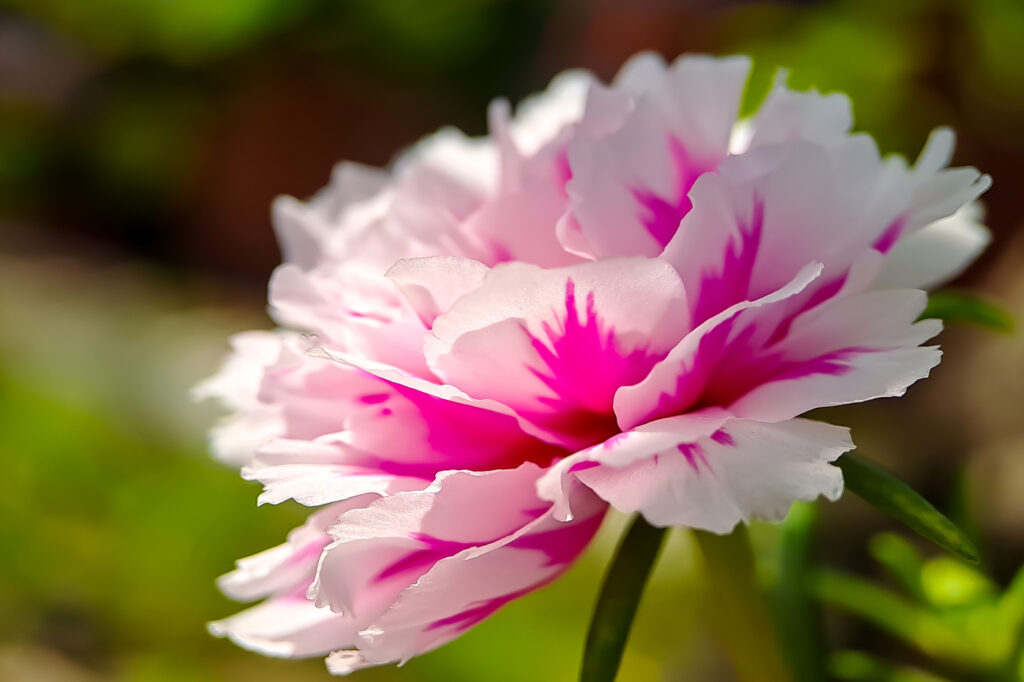
Moss rose is another popular plant that is easy to grow. It can tolerate a range of soils and is drought-tolerant. While it is an annual, moss pink can self-seed and return in subsequent years. It has succulent leaves and a single plant can have multi-colored blooms.
- Type: Annual succulent
- Water: Dry to Medium
- Bloom Color: Pink, red, yellow, orange, white
- Hardiness Zone(s): 2 to 11
- Bloom Time: Spring
- Mature Height (inches): 4 to 8
- Exposure: Full sun
- Uses: Groundcover, front of borders
24. Mountain laurel (Kalmia latifolia)
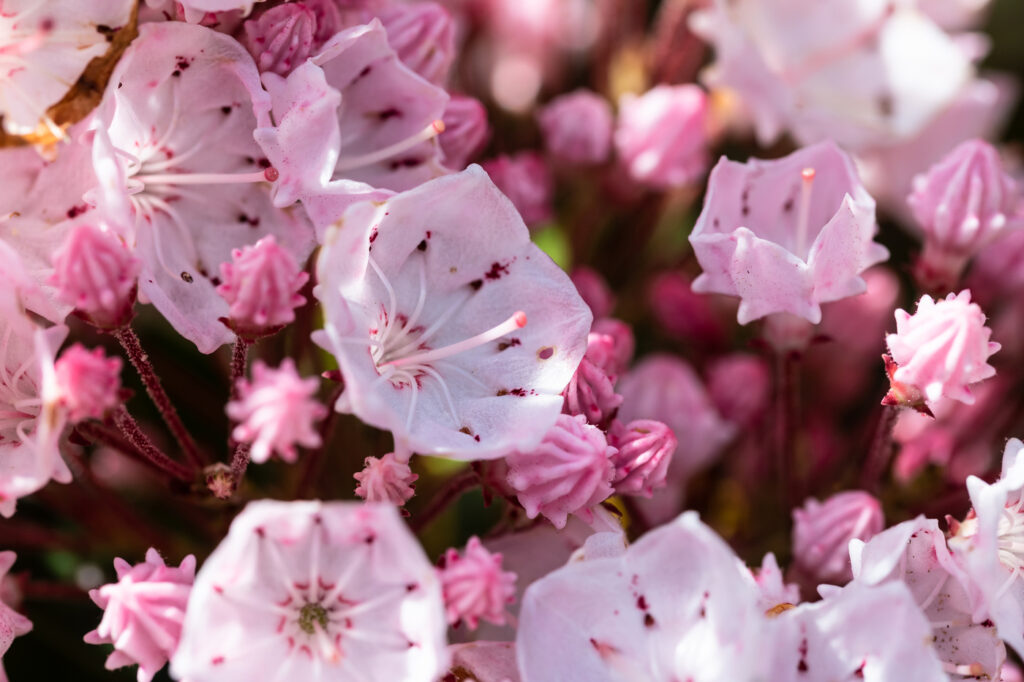
The mountain laurel is both the Pennsylvania and Connecticut state flower. It grows in woodlands and can tolerate varied light conditions. The mountain laurel blooms in spring, but has evergreen foliage for year-round interest.
- Type: Broadleaf evergreen
- Water: Medium
- Bloom Color: White, pink
- Hardiness Zone(s): 4 to 9
- Bloom Time: May
- Mature Height (feet): 5 to 15
- Exposure: Part shade
- Uses: Shady parts of the garden, woodlands
25. Mullein (Verbascum thapsus)
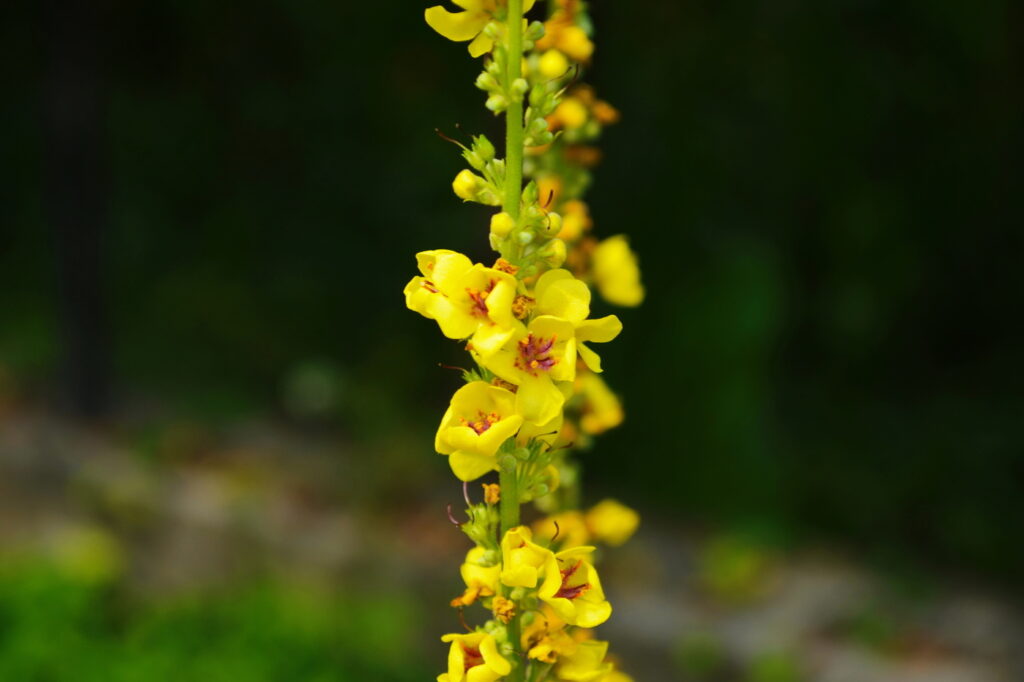
Mullein has tall, spire-like flowers, making it one of the memorable types of flowers that start with M. It is a prolific grower as a single plant can produce over 180,000 seeds a year. Mullein is most common in the midwest but can be planted throughout the US. Also, its leaves can be used for making tea.
- Type: Herbaceous biennial
- Water: Average, let the soil dry between waterings, dislikes excess moisture
- Bloom Color: Yellow, orange, pink, and white
- Hardiness Zone(s): 3 to 9
- Bloom Time: Summer
- Mature Height (inches): 24 to 60
- Exposure: Full sun
- Uses: Borders, backgrounds, and meadows
26. Mum (Chrysanthemum spp.)
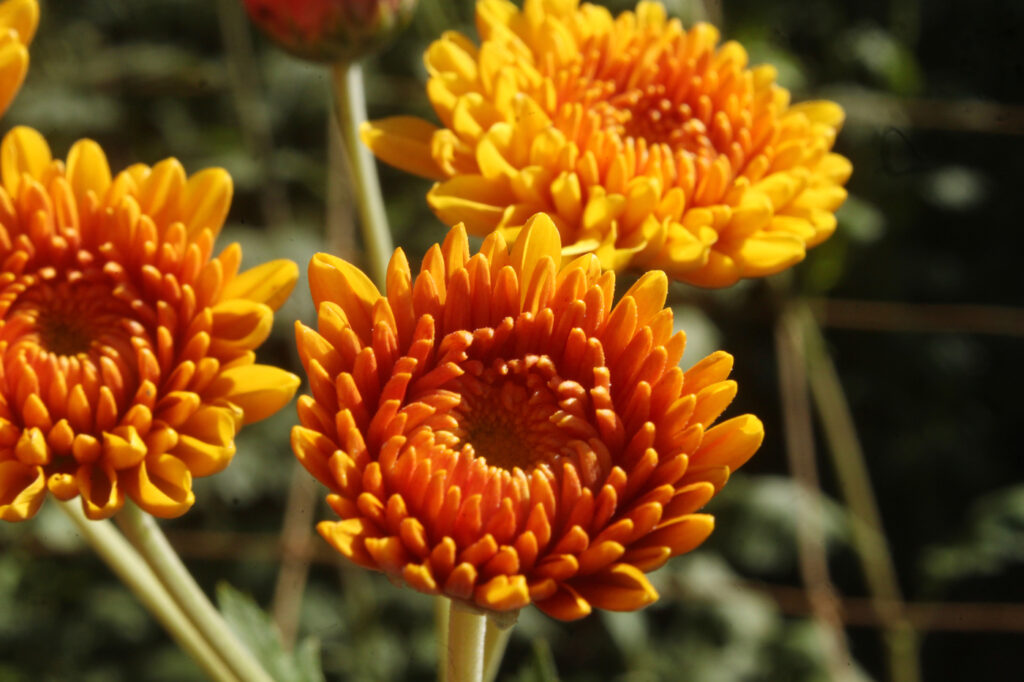
The mum is a very popular fall plant. It grows foliage in spring and summer and blooms in the fall. If purchased in the fall, it should be planted in spring. Mums have delicate roots that cannot establish in cold weather.
- Type: Herbaceous perennial
- Water: Average
- Bloom Color: Red, yellow, orange, pink, white, maroon, and blue
- Hardiness Zone(s): 4 or 5 to 9 (depending on species)
- Bloom Time: Fall to late fall
- Mature Height (inches): 18 to 36
- Exposure: Full sun
- Uses: Borders
Frequently Asked Questions (FAQ) About Flowers That Start With M
What are the most common flowers starting with M?
Meadow rue, marigold, mum, Mediterranean sea holly, mock orange, moss rose, Montauk daisy, and mountain laurel are the most common flowers that start with the letter M.
Are there any red flowers that start with an M?
Masterworts are some remarkable red flowers that start with an M as they have the most number of red flower varieties. There are several varieties of mums that have red and maroon flowers.
What are some types of white flowers that start with M?
Sweetbay magnolias, meadowsweet, mock orange, Montauk daisies, mountain laurel, and mugwort are all beautiful flowers that start with M that are white.
What are some varieties of purple flowers that start with M?
Mammillaria, milkweed, mums, and monkshood all have purple flowers. Some species of monarda have purple flowers as well.
Are there any spring flowers that start with M?
Sweetbay magnolia, mayapple, merrybells, mock orange, moss pink, and mountain laurel all bloom in the springtime.
What are some tropical flowers that start with an M?
Sweetbay magnolia is the only genuinely tropical flowers starting with M on this list. Other flowers like mayapple and mock orange have a tropical appearance.
Image credit: Depositphotos; PIXNIO; 3: Peter A. Mansfeld; 10: Paul van de Velde
